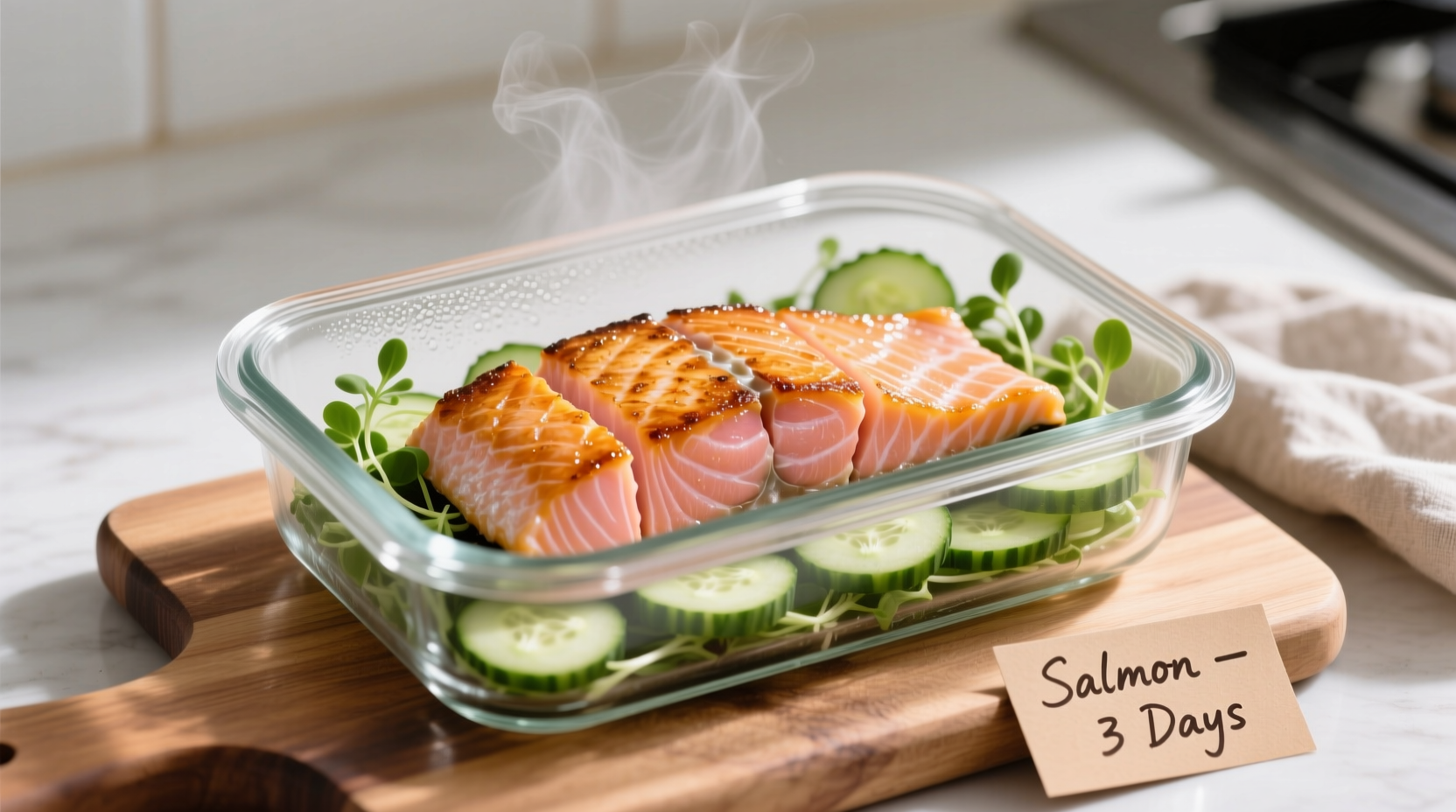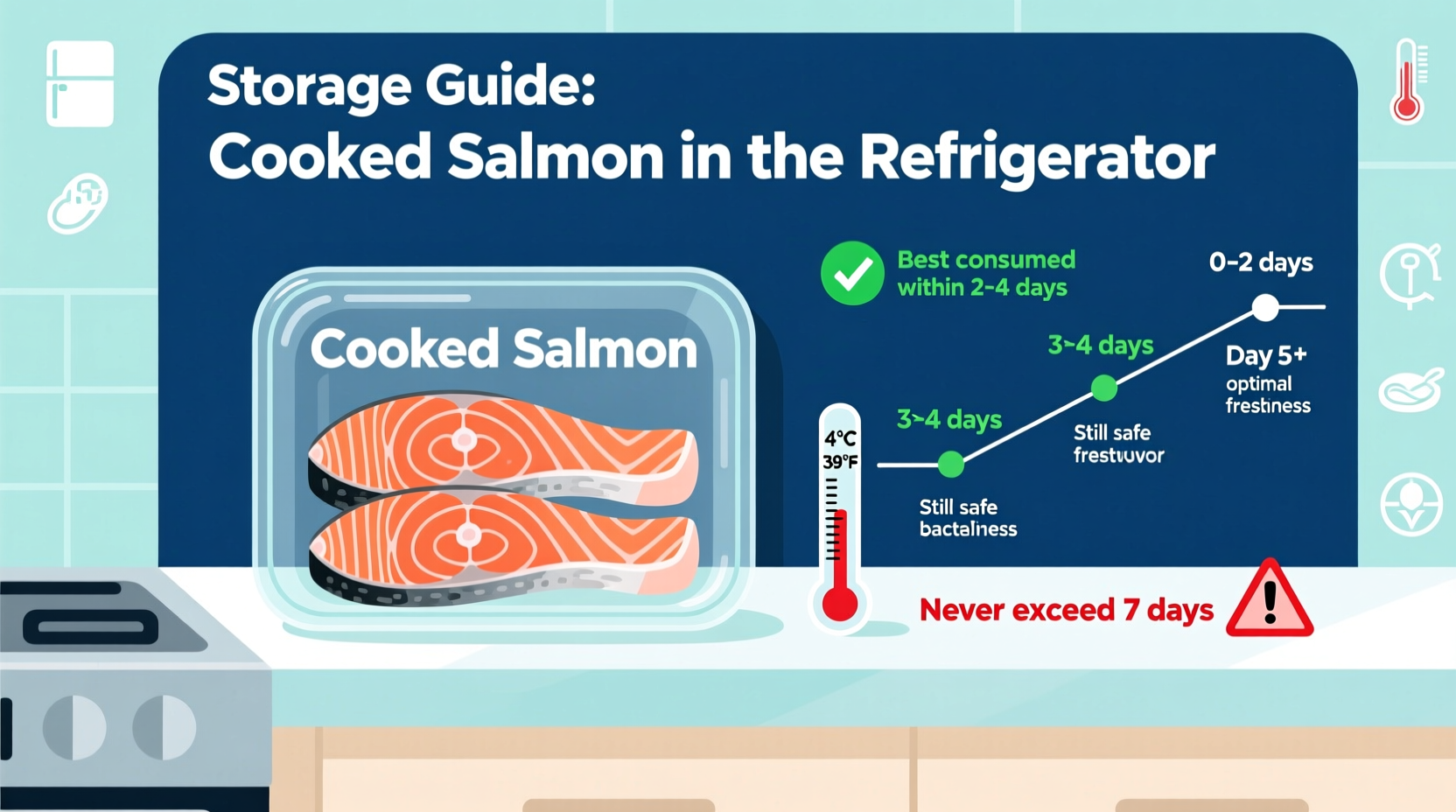Understanding exactly how long you can keep cooked salmon in the fridge isn't just about avoiding food waste—it's crucial for preventing foodborne illness. As a culinary professional who's worked in both high-end restaurants and everyday kitchens, I've seen how improper fish storage leads to unnecessary health risks and wasted meals. This guide delivers the precise storage guidelines you need, backed by food safety science, so you can enjoy your salmon dishes with complete confidence.
Why Proper Cooked Salmon Storage Matters
Fish spoils faster than many other proteins due to its delicate structure and high moisture content. When cooked salmon enters the "danger zone" between 40°F and 140°F, bacteria like Listeria and Vibrio multiply rapidly. According to the USDA Food Safety and Inspection Service, cooked fish left at room temperature for more than two hours enters the high-risk category for foodborne illness. Their official guidelines confirm the 3-4 day refrigerator window for cooked seafood when properly stored.
Step-by-Step: Storing Cooked Salmon Correctly
Following these steps ensures you maximize both safety and quality:
- Cool rapidly – Transfer cooked salmon from the cooking surface to a shallow container within two hours of cooking. Never leave cooked salmon sitting at room temperature for extended periods.
- Portion control – Divide large quantities into smaller portions (2 inches or less in depth) to cool faster and minimize temperature fluctuations when accessing leftovers.
- Airtight containment – Place cooled salmon in glass containers with tight-fitting lids or quality food-grade plastic containers. Alternatively, wrap tightly in heavy-duty aluminum foil or plastic wrap.
- Strategic placement – Store containers on middle or lower refrigerator shelves, never in the door where temperatures fluctuate most.
- Temperature verification – Use a refrigerator thermometer to confirm your appliance maintains 40°F (4°C) or below—the FDA Food Code standard for safe food storage.
| Storage Method | Safety Window | Quality Preservation |
|---|---|---|
| Refrigerator (40°F or below) | 3-4 days | Best flavor and texture for first 2 days |
| Freezer (0°F) | 2-3 months | Optimal quality within first month |
| Room Temperature | 2 hours max | Rapid quality degradation |
How to Tell If Your Cooked Salmon Has Gone Bad
Don't rely solely on the calendar—your senses provide critical safety information. Discard cooked salmon showing any of these spoilage indicators:
- Texture changes – Slimy or sticky surface (fresh cooked salmon should feel firm but moist)
- Odor development – Strong fishy or ammonia-like smell (properly stored salmon has a mild ocean scent)
- Color shifts – Dull appearance or grayish tint instead of vibrant pink-orange
- Mold presence – Any visible fuzzy spots, regardless of color
When in doubt, throw it out. FoodSafety.gov emphasizes that you cannot smell all dangerous bacteria, so sensory evaluation complements but doesn't replace time-based guidelines.

Extending Your Salmon's Shelf Life: Freezing Guidelines
If you won't consume your cooked salmon within 3-4 days, freezing preserves both safety and quality:
- Wrap portions tightly in freezer paper, then place in heavy-duty freezer bags
- Remove as much air as possible from packaging to prevent freezer burn
- Label packages with contents and date
- Consume within 2-3 months for best quality (safe indefinitely but quality degrades)
Thaw frozen cooked salmon in the refrigerator overnight—never at room temperature. Once thawed, consume within 1-2 days.
Safe Reheating Practices for Leftover Salmon
Proper reheating destroys bacteria that may have developed during storage:
- Reheat to an internal temperature of 165°F (74°C) as measured by a food thermometer
- Oven method: 275°F for 15-20 minutes until heated through
- Stovetop: Gently warm in a covered pan with a splash of liquid
- Avoid microwaving whole portions as it creates uneven heating
Remember that you should only reheat cooked salmon once. Multiple reheating cycles significantly increase food safety risks.
Common Storage Mistakes That Shorten Shelf Life
Avoid these frequent errors that compromise both safety and quality:
- Storing while still hot (raises refrigerator temperature)
- Using non-airtight containers (allows moisture loss and odor transfer)
- Placing containers in the refrigerator door (exposed to temperature fluctuations)
- Ignoring "use by" dates on store-bought cooked salmon
- Reheating multiple times
University of California Food Safety experts note that improper cooling accounts for nearly 30% of home foodborne illness cases involving leftovers. Taking just five extra minutes to cool and store properly makes a significant difference in safety outcomes.
Special Considerations for Different Salmon Preparations
Certain cooking methods and additions affect storage duration:
- Marinated salmon – Acidic marinades may slightly extend freshness but follow standard 3-4 day rule
- Salmon in sauce – Sauces with dairy or eggs reduce shelf life to 2-3 days
- Smoked salmon – Follow package instructions; typically 1-2 weeks unopened, 5-7 days after opening
- Salmon salad – Mayo-based salads last only 2-3 days due to additional perishable ingredients
When combining cooked salmon with other ingredients, always follow the shortest shelf life guideline among the components.











 浙公网安备
33010002000092号
浙公网安备
33010002000092号 浙B2-20120091-4
浙B2-20120091-4